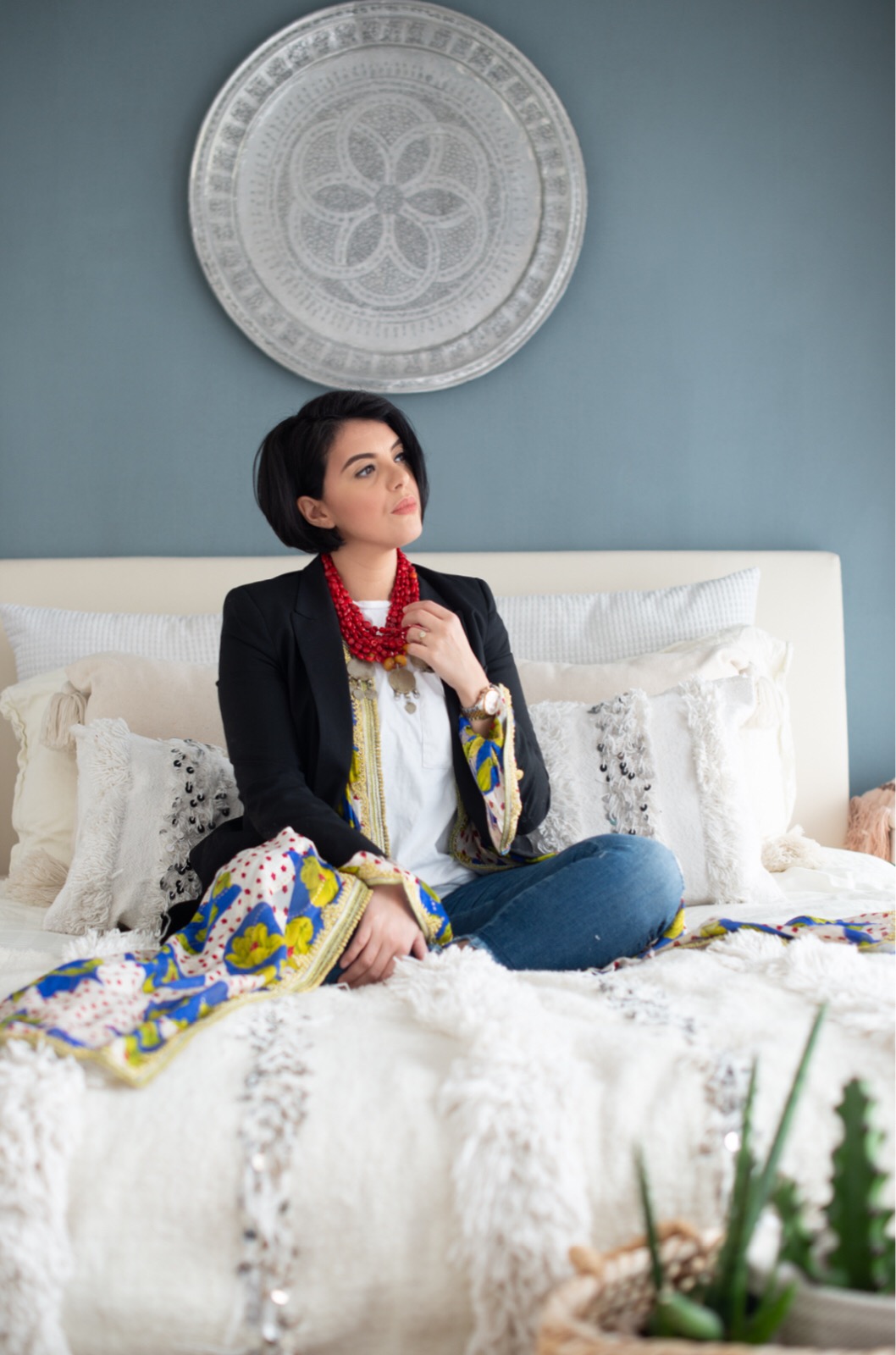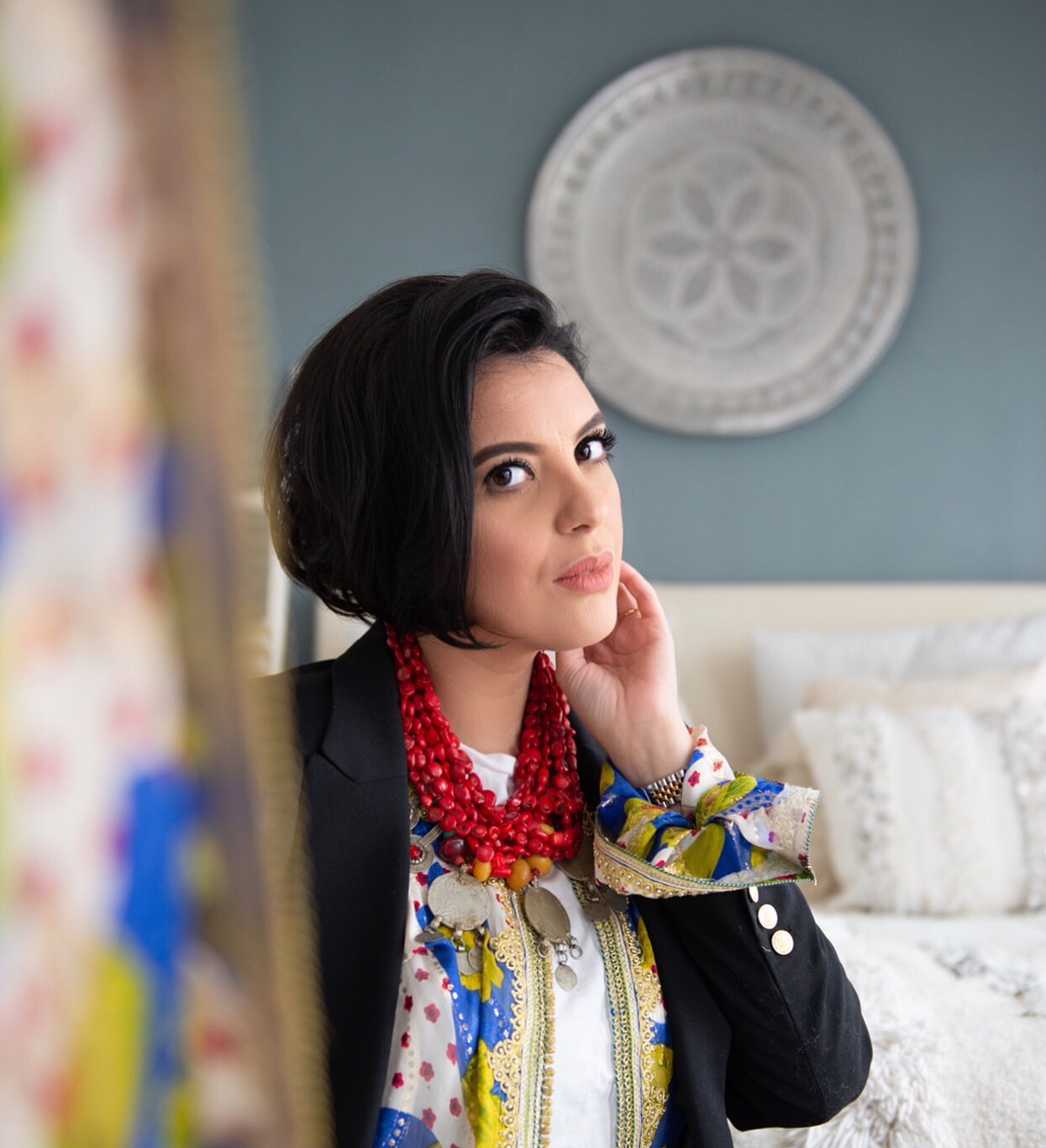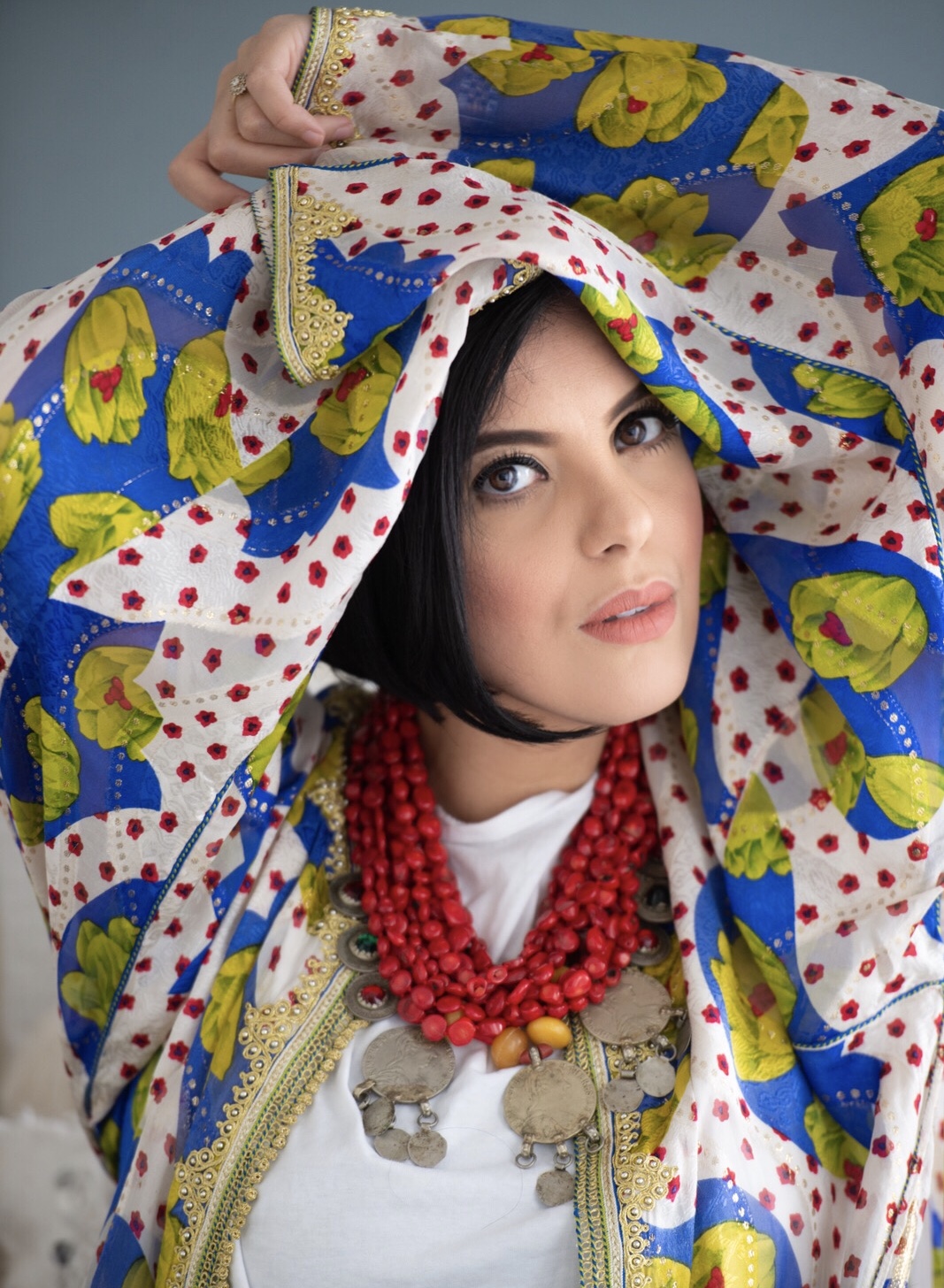STONES STORIES ON CNNARABIC

-
How did the idea of starting “stones stories” brand spark?
“During my first trip to Marrakesh – one I will never forget. I was mesmerized from the moment I saw the old jewellery and textiles craftsmanship in South Morocco. The connection between craft and old rituals has been such a fascinating eye-opener to me. It all started with the idea to make an ornament processed with amber, a fossilized resin from the so-called coniferous pine tree. Once I got back in my home town Amsterdam, I kept thinking about the Moroccan craftsmanship. At this moment it was very clear to me: I had a rooted passion, which was designing jewellery with cultural heritage as the background story and source of inspiration. Thanks to my partner Chafik, I registered my second business: STONES STORIES.”
-
What has led you to imbed your Moroccan culture into the brand?
“The roots of my parents are in this beloved country. My parents are born Amazighs in Morocco. Most Berbers nowadays live in Morocco or Algeria, most centred communities are in Tunisia, Libya Mali and Niger. As crazy as this may sound, I knew very little about the history of my own roots. As I got older, I felt more intrigued by it. I dearly wanted to know more about my family’s background story. After my first trip to Marrakesh, I started studying Cultural Anthropology at the university. Discovering mystery of the Berber culture has been a profound part of my personal development. One year later I started planning my first extensive road trip through Morocco. This was the beginning of my first collection ‘HABIBA’ for my own jewellery line.”
-
For an audience who doesn’t know much about the Berber or Moroccan culture and design, what features (color, design or maybe style) can be spotted in your accessories that identify with the Moroccan style?
“Jewellery collections of STONES STORIES are each designed to honour cultural heritage of North Africa. Bracelets, necklaces, clothing jewels and head ornaments are the most worn jewellery by the Berbers. Silver jewellery in the Amazigh culture is mostly decorated with beads, amber, shells and silver coins. For the STONES STORIES jewellery line, we only use old silver, natural stones and beads. Our ethnical silver jewellery is symbolic and has its mythical meaning in the Berber culture.”

-
What is the goal behind such an accessory line?
“It sure is an important part of my own identity that I want to secure through STONES STORIES. I firmly believe as a designer that we have to continue honouring the cultural heritage of North Africa through jewellery. STONES STORIES is a jewellery label with its own authentic storytelling, we offer our customers a piece of North Africa’s history through jewellery. Something we can be extremely proud of. The jewellery line is also in essence a love story between my two beloved countries: the Netherlands and Morocco. I am born and raised in the Netherlands with my roots rooted in Morocco. This made me who I am today, as a designer I know that this feeling might be recognized by several people with a similar ‘dual nationality’. Instead of complaining about or having to choose between two cultures, I celebrate this love story through my jewellery.”
-
Do you have stores or ship orders to middle eastern countries? (if yes then where and if no, then why?)
“It is absolutely my goal to be online available and sell in the Middle East very soon. STONES STORIES is not only a means to adorn a woman. This label tells the story of Amazigh women who were not only very emancipated, but also maintained traditions, customs, jewellery and textile processing. STONES STORIES jewellery is exclusive and limited edition. There is only one design of each jewel. Its uniqueness of this concept is found in the magnificent Moroccan craftsmanship and authenticity of our label, which may be appealing for many women in the Middle East.”
-
What are some of the future goals you aim to accomplish?
“I can say, in all modesty, that we have achieved our first main goal with STONES STORIES. The label has been showcased and sold in several museums throughout the Netherlands. Right now, we are focusing on our second goal: we are currently looking for retailers in different countries to expand shopping experience of STONES STORIES with. We can mark München of our list already. Last year we have been in Loftcube at Pinakothek der Morderne. Pinakothek der Moderne is the museum for art, graphics, architecture and design – in the heart of the ‘Kunstareal München’.
We are also launching our second exclusive exhibition called ‘NEW LAND’ later this year. This exhibition refers to the profound message behind STONES STORIES. I would love to launch this exhibition internationally.”

-
Do you think that fashion in general and accessories in specific can deliver a message to people?
“Absolutely. Clothing, in particular jewellery, are present in non-verbal communication. Interesting about jewellery: it is always personalized by peoples personal clothing style. Clothing tells a lot about someone’s personality. We can choose the same jewellery, but our outfits will still radiate differently. That is the power of a jewellery label: we do not exclude anyone, everyone can style as preferable.”
-
Why did you choose the name “stone stories” for your brand?
“Surprising about this story, my husband Chafik picked the name, he sure has been listening to my stories very well J. When I told him about my research on the Amazigh culture and what I wanted to achieve with my own jewellery label, he directly said: ‘STONES STORIES’. I fell for this name immediately. All jewels describe special natural stones and carry a story. This makes STONES STORIES more than just a jewellery line. Each piece of jewellery is a story that is as powerful as a stone itself.”
-
How do you make traditional accessories or to be more specific (Moroccan design appealing for costumers from a totally different background)?
“I am born and raised in the Netherlands. I know how it feels to grow up with two totally different cultures. At home the Moroccan Islamic culture prevailed, meanwhile I handled my social activities with Dutch friends, who lived a different lifestyle. I did not know better. This was the norm for me.
My past made it possible for STONES STORIES to be merged with two cultures. European garments are often the decor for my jewellery. I find this interplay exciting and above all very imposing. Luckily the combination of these two styles / cultures are appreciated by our customers. The largest target group of STONES STORIES are Dutch women aged between 30 – 50 years, with a small minority of Moroccan women in the same age category.”
-
How does your brand fall under sustainable jewellery criteria?
“STONES STORIES is exclusively made in Morocco according to ancient and Jewish craft techniques. We deliberately choose to not use any new materials for crafting jewellery – we only use natural stones, beads and silver. As a designer I hand out my designs and explain explicit what my desires are for the specific jewel and which story it carries. This is how every jewellery line is produced after my road trip through Morocco.”
-
Do you get certain stones or jewellery parts from morocco?
“Each stone, bead and silver has been made in Morocco. Although I strictly write my strategic plan and goals for upcoming collections when I am in the Netherlands, the design of a new collection always starts in Morocco.”

-
Are your accessories handmade?
“All STONES STORIES jewellery lines are handmade in Morocco. I end every road trip throughout Morocco in Marrakesh, to have a new collection made according to my sketches.”
-
What is your favourite piece from your line?
“My very first design. When I travelled through Marrakesh for the first time, I designed a necklace made of 100% amber. As you may understand, I could not sell this eye catcher. This necklace has been exhibited for about 3.5 years at the children exhibition ‘Ziezo Marokko’ at the Tropenmuseum in Amsterdam. This jewel has an emotional value for me, I dearly want to pass this necklace on to my child(ren) later on.”
@stonesstories (facebook and instagram)
Text: Raisa Huisden
photo credit: Daisy von Dutch / zegmaarkaasfotografie

